The Silky Terrier, also known as the Australian Silky Terrier, is a small-sized dog with a large personality. A fully mature adult, weighing merely 8 to 10 pounds, is a resilient and a self-confident dog.
He has a history of hunting small prey. Despite this, he is an affectionate companion dog who doesn’t like to stay away from his person.
The Silky is an adventurous and highly active dog who is also alert. Considering its small size, its exercise requirements are not high demanding. It can be mischievous at times.
The breed was born in Australia although its ancestors were from Great Britain.
In North America, it is known as the Silky Terrier, whereas, in Australia and other parts of the globe, it is called the Australian Silky Terrier.
Its highly glossy coats give it a charming look. It is originally from Sydney in Australia and is larger than his cousin, the Yorkshire Terrier.
Table of Contents
Silky Terrier Pictures
Silky Terrier Facts

Average Weight: 8 – 10 pounds
Average Height: 9 – 10 inches
Life Expectancy: 12 – 15 years
Dog Group: Toy Group
Colors: Blue, Tan
At a Glance
- Size (1/5):
The Silky is a little longer than tall, possessing an athletic body. Though it is a toy dog, it is built to hunt small animals.
The Silky Terrier weight is only eight to ten pounds while its height is only up to ten inches.
- Affection Level (4/5):
Silkies are loving, smart, and friendly. However, they can be stubborn as well. They have all the characteristics of a best friend.
They are soft, faithful, and gentle. They like to spend good time with owners and are considered as therapy dogs.
- Apartment Friendly (5/5):
In spite of him being highly energetic, he is very capable of being an apartment-friendly dog.
He needs a lot of exercise, and yet he has all the traits necessary to be a good apartment dog. Silkies remain active even inside the house.
- Cold Weather Tolerability (1/5):
The Silky has very poor tolerability for cold weather. Extra care will be needed to be taken during the winter season to avoid any kind of infection from harming it.
Put winter clothes on him in cold weather as its single coated body won’t be sufficient to provide it the basic protection against cold.
- Hot Weather Tolerability (4/5):
Silkies can endure hot weather brilliantly. No extra protection is demanded for the hot season.
Its silk coated body helps it to expel excessive heat in hot weather. Its coat is quite weightless, and so it also helps the Silky in managing its body well while moving.
- Barking Tendencies (4/5):
The Silky Terrier dog is fond of barking and chasing. He has a high tendency to bark, though a restrictive command like “Quiet” can be useful in curbing its behavior.
Barking is a common trait in Terriers. It is kind of a pass-time for Silkies. If you give him orders not to bark, he will still bark if he thinks it is essential.
- Cat Friendly (3/5):
They are very good with anybody they get together including pet cats. They have a high prey drive. If they see unfamiliar cats, they may give them a chase.
- Dog Friendly (2/5):
Silkies are reasonably friendly towards strangers but can sometimes turn out to be aggressive towards dogs.
They can sometimes be dominating with other dogs and argumentative with other same-sex dogs.
Only if he is raised to be dog-friendly can Silky get really well with other dogs.
- Exercise Needs (3/5):
The silky has an average exercise necessity. Due to their size, the workout needs can be met in a small space.
Providing him with 20 to 40 minutes of rigorous exercise every day can make him remain active and energetic for the rest of the day.
- Grooming Needs (3/5):
Regular grooming is essential for a Silky Terrier. As a dog of a young age, make him accustomed to grooming on a routine basis.
Brushing 2 times a week is proper, and a bath every week or two is advised. You should always refrain from brushing a dry coat, and instead, should spray some liquid before starting to brush.
- Playfulness (4/5):
A Silky Terrier’s temperament is nice and cool. He is inquisitive and playful and is interested in approaching people and be held by them.
- Trainability (4/5):
Terriers have a tendency to be highly trainable, and so is Silky. Interestingly, they are resistant to some types of training.
Training with abuses can mean giving negative reinforcements. Repetitive training is also not recommended. Some breeds are helped by repetitive commands, while the Silky will resist your commands if it finds them boring.
- Intelligence (4/5):
Their high intelligence can lead them to mischief and destruction if handled improperly.
As long as children acknowledge their intelligence and don’t handle them irresponsibly, Silkies are good towards them.
- Mouthiness (2/5):
Silkies have an average inclination towards nipping, biting, and chewing. It is common during their puppyhood.
If too much of this habit persists during its adulthood, then it can turn out to be an aggressive behavior. Silkies don’t bite hard but should be taught against developing this habit further.
- Price Group (4/5):
The average price of a Silky is $1000 to $2000. They are included in the medium to high price range. There are lot many things to consider while buying and maintaining a puppy such as grooming, vet expenses, reputation of breeders, etc.
About Silky Terriers
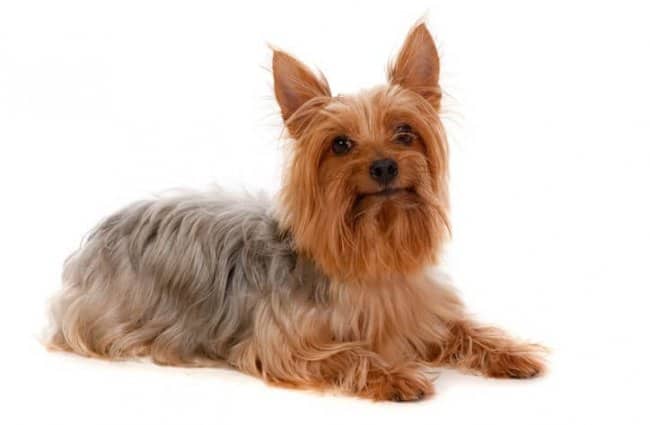
The Silky Terrier breed dog is a graceful little dog with a fine, silky coat of tan and blue. Under this exterior of it, is a confident and zesty personality.
Many are taken by surprise by its ability to tackle intruders, deal roughly with larger dogs, or the stamina they display in a hike.
It has all the traits and temperament of a Terrier and loves digging, barking, and chasing. The Silky is a family dog and is faithful.
He can’t stay alone too long in an apartment because he always strives for human companionship. If left unsuperintended, he can create lots of mischiefs.
The Silky Terrier puppy requires exercise every day and it would be great to take him for a walk.
If the Silky is exposed to children in early puppyhood, he can become friendly with older children. The children must also be kind and considerate towards him.
The Silky Terrier, if handled appropriately, can add flavor and love to life.
Where Silky Terriers Come From?

The first Silky was born in Australia in the 1890s. He was a cross between the non-native Yorkshire Terrier with the native Australian Terrier.
Some of the initial offspring had the resemblance of the Yorkie, some appeared like the Australian Terrier, while a few like the Silky itself.
The breeds were bred until the offspring had the right characteristics of a Silky.
In the first decade of the 18th century, a two breed standards for the Silky were developed. The standards included details on how the breed should move, appear, and behave.
After some years, these breed standards were merged to form the standardization of today’s Silky Terrier dog.
As compared to its progenitors, the Silky is larger than the Yorkshire Terrier and smaller than the Australian Terrier.
Size
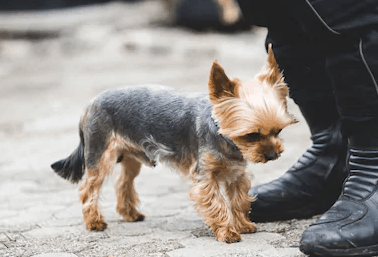
The Silky has more length than height. It is not a big dog since it is a toy breed. It has a lean and sturdy body, suited for the purpose of hunting small wild animals such as rodents.
Its neck is medium in size, not too long and not too short. Its ears are small and upright. Its tail always remains high.
The Silky’s legs and feet are short and small respectively, and its head is wedge-shaped and strong.
Interestingly, there is not much to distinguish in the body sizes of males and females. Unlike many other dogs, the sizes of males and females are same.
Both, the males as well as females have a height of 9 to 10 inches and have a weight of around 8 to 10 pounds.
Trainability

Although he is a toy dog, the Silky needs a reasonable amount of exercise and training. Daily walks are his favorite mode of workout.
He enjoys playing energetically with the owner in the yard. He also likes to visit dog parks especially where there is a separate small dog section.
If you don’t have the time to go take the dog outdoors, no problem. The Silky can work out well indoors as well. In a sufficiently large area such as the hall of the house, you can play the exciting game of fetch with Silky thereby giving it the required exercise.
Prevent other dogs to get into the territory of the Silky, because they may get into a brawl with your Silky.
Silkies are quite able to be trained and are obedient like students. Caution is advised while training him because he is a smart dog.
They may make up their own ways of training, so you need to be constantly accurate while training them.
Giving positive reinforcements in a fun way can make them highly cooperative. Housetraining can be given to them effectively with the use of crate training.
To know how to effectively potty train your dog, visit this link.
Grooming
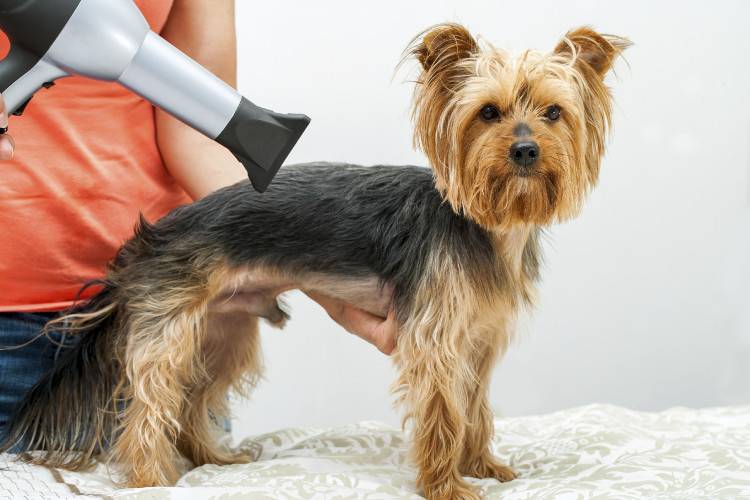
The Silky Terrier’s coat is charming. It is long, smooth, and glossy. His coat, beginning from the back, hangs down very long, almost 5 to 6 inches below his belly.
To ensure a proper upkeep of his beautiful coats, a regular and thorough brushing and combing is essential. Brushing his coat two to three times a week (before bath time) is beneficial.
A bath every month with a dog-specific shampoo is a must to keep your Silky tidy, free of knots, and without skin problems.
Oatmeal shampoo and Avocado shampoo will assist in lessening the itchiness and dryness of the Silky’s skin.
In your grooming sessions, look for signs such as lumps or skin problems. Also check whether the eyes and ears are free from problems.
To prevent bacteria and germs from building up inside the teeth, brush the Silky’s teeth two or three times every week. Brushing his teeth daily is even better.
Trimming his nails one or two times a month is ideally recommended. Be careful not to cut his nails so deep that their skin starts to bleed.
For stepwise instructions on grooming your silky, visit this link.
Common Diseases

TARGETING THE BONES
Legg-Calve-Perthes Disease:
This condition affects the hip joint. Here, the blood supply to the big bone on the rear of the dog is reduced. The head of the rear bone connected to the pelvis starts degenerating.
The initial symptoms of the disease are limping and atrophy of the leg muscles. These can be seen when the puppy is 4 to 6 months of age. Surgery can help eliminate the pain associate with this condition
Patellar Luxation:
In this condition, the kneecap separates from its usual location. This is common in small dog breeds such as the toy breed.
Patellar Luxation occurs when the puppy is 4 to 6 months old. Surgery is required if the dog develops a difficulty to walk.
This condition causes pain in the dog and can cripple him for a lifetime. However, many dogs can carry on with normal living.
TARGETING THE NERVOUS SYSTEM
Epilepsy:
It is a neurological disorder that causes seizures in the body.
Often, awkward behavior will be seen in the dog with epilepsy, such as falling sideways with legs straight and head twisted, or running around uncontrolled.
The causes of most seizures remain unknown.
TARGETING THE EARS
LIFESTYLE DISORDERS
Diabetes Mellitus:
When the dog’s body becomes incapable of regulating the blood sugar level, this condition occurs. Symptoms most often include excessive urination and thirst, increased appetite, and weight loss.
A proper diet and the provision of insulin can help keep diabetes in control.
BREATHING DISORDERS
Tracheal Collapse:
This condition is common in smaller breeds. When the cartilage weakens, the windpipe becomes flat, which results in obstructing the airway.
Symptoms involve coughing, passing out, and reluctance to exercise. Treatment options include cough suppressants, antibiotics, and steroids. Surgery can be carried out only if other treatments don’t work.
Feeding

Quality dog food for your Silky is highly recommended. Feed it according to the age of the dog. Feed only puppy dog food for a puppy and adult dog food only for an adult dog.
Give a regulated diet to your dog keeping in mind its small size.
Give table food in limited quantity. Refrain from giving cooked bones and food items with high fat content.
Divided into two meals, give your adult Silky daily a diet consisting of ½ to ¾ cups of high quality dry food. For Silky puppies, provide 1/8 to ¼ cups of high quality dry food.
Silkies are good artists and can act as if they are hungry even after finishing food. Don’t give in to this behavior. Measure regularly the amount of food he takes in order to keep him in good shape.
Check with your veterinarian immediately if you feel concerned about your Silky Terrier weight or diet.
Suggested: Senior Dog Food
Silky Terrier Vaccination and Care

The breeder must vaccinate the Silky before he is sold. Check the vaccination certificates from the breeder. This ensures that your dog has undergone full health checkup process.
The vets will provide certificates at the time of consultation. Protect your dog from problems such distemper, hepatitis, parvovirus, etc. Give first vaccination at the age of 8 to 9 weeks, and second at 12 weeks of age.
Read our Guide To Dog Vaccination to have thorough knowledge about vaccines.
Silkies require enough time to be devoted to them. You ignoring them will be hated by them. Rules must be made for them and it should be ensured that Silkies adhere to those rules. Otherwise, they may start creating mischief.
Keep the Silky leashed at all times since it has a high prey drive.
Australian Silky Terriers are not hard to train. However, because of their smartness, they can easily take a different route if not trained constantly and accurately.
Crate training your dog can help in housetraining, and to adjust your dog to confinements such as hospitals if ever required.
Monthly Expense Estimation
If you are buying the puppy from a reputable breeder, it will cost around $1000. If you are interested in buying show dogs, then the cost may well reach $2000.
Be cautious of local ads and online ads, as some of these breeders are not well-informed and are intentionally cruel.
Medical needs for the Silky Terrier dog can reach to about $50 to $300. Medical costs including neutering or spaying, blood tests, physical exams, etc. can reach up to $260.
Accessories such as a leash, crate, and bedding can cost about $120.
Food costs including treats and dry dog food can be $75. Basic medical care can be almost $435 per year.
Behavior
Children:
If the Silky is made to be with children from their puppyhood, they can grow to be good companions of children over 10 years of age.
The kids should be taught to be kind and considerate towards Silkies. Poking by children will annoy the Silky Terrier.
Dogs:
They can play energetically with larger dogs because Silkies aren’t afraid of them.
Silkies have an intense prey drive. Not only do they chase smaller animals such as cats and rodents, they also do chase other dogs. Always leash your dog when around other dogs to prevent fighting.
Silkies can be territorial and sometimes be aggressive with other dogs.
Cats:
Cats will mostly be chased whenever the Silkies spot them from a reachable distance.
With other pets at home, and especially with cats as pets, Silkies won’t do good as companions. Thus, other pets should not be kept along with these dogs.
Overview
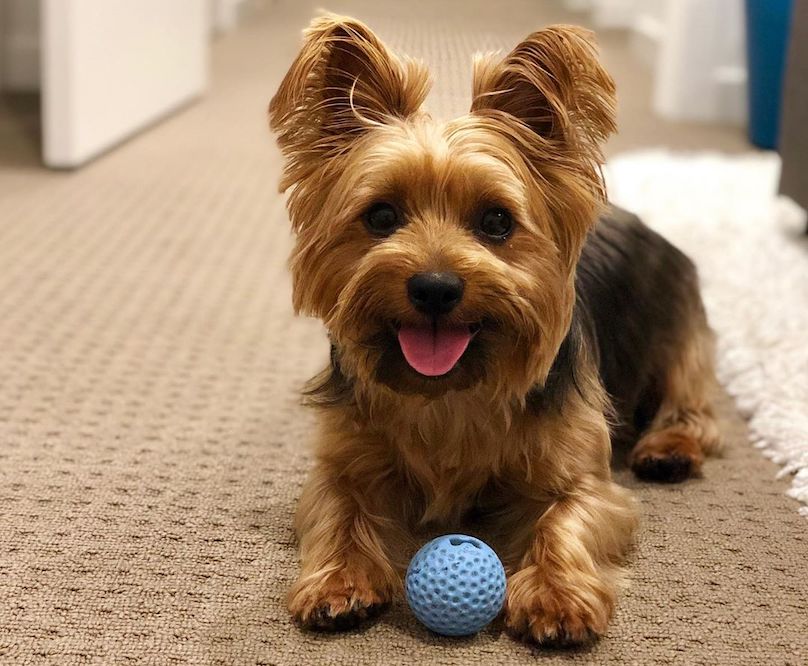
In spite of his small size, the Silky is a good watchdog, as he can readily give the warning by sound if a stranger enters his territory.
The Silky is highly dedicated to his family despite his independent nature. He does best when he has the company of his fellow humans.
The dog would be happy to travel along with you wherever you decide to go, as he is adaptable.
In spite of their long coats, they can manage them easily. They do need regular grooming.
A Silky enjoys digging. Train him to dig in a specific area and make sure it doesn’t dig flowerbeds or the neighbor’s area.
Barking is common in these dogs. You can control it by giving commands. However, it is also useful as a watchdog trait.
When in the open yard, he must never be left unsupervised, as other wild animals in the vicinity may consider it a prey.
Something Fun about Silky Terrier

In the initial days of the breed’s birth, these dogs were called Sydney Silkies, as they were available only in Sydney, Australia.
In 1955, the name Sydney Silky Terrier was changed to Australian Silky Terrier.
Unlike most Australian breeds, the Silky was bred to be a pet and a companion dog. It is also known that the Silkies had killed snakes.
The Silky Terriers have titles and recognition to their names while participating in special athletic events such as agility, fly ball, herding, etc.
They were originally bred to hunt small vermin. Their high energy levels help it to overpower and catch the small prey.
We are glad that you are here. Leave your valuable feedback as comments below.
For further knowledge and updates, keep checking our site.
Happy Petting to You Guys!



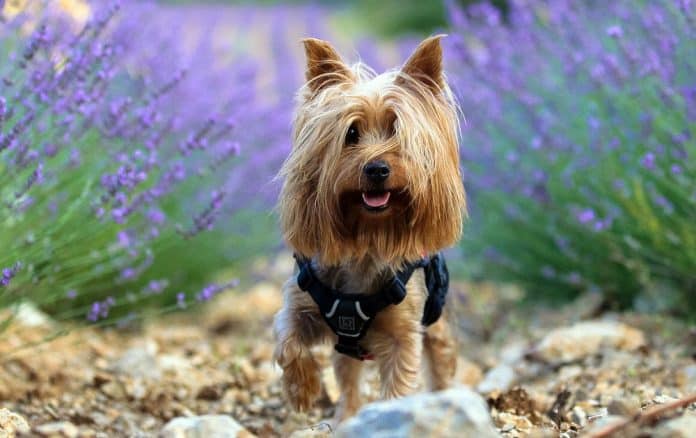



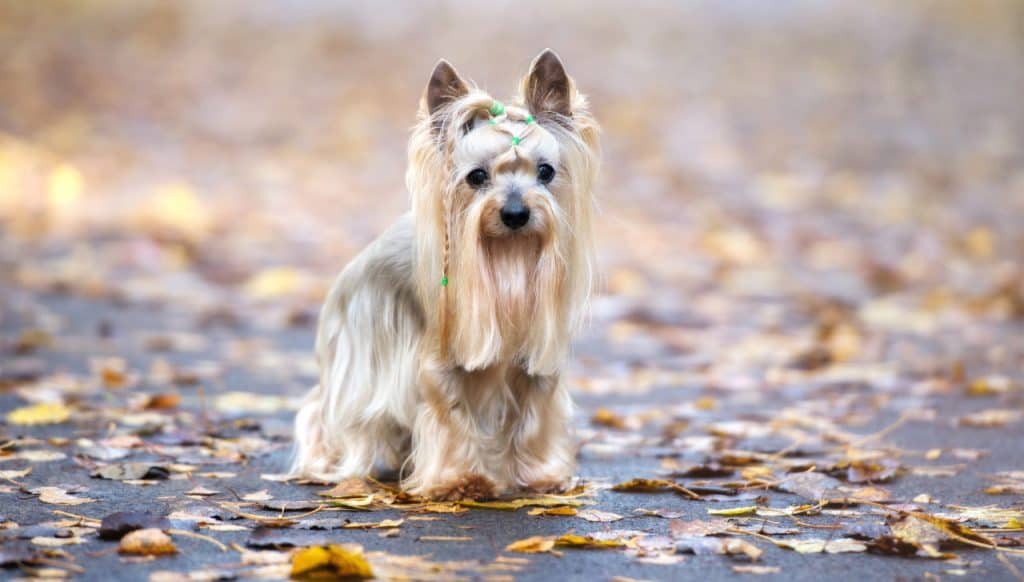
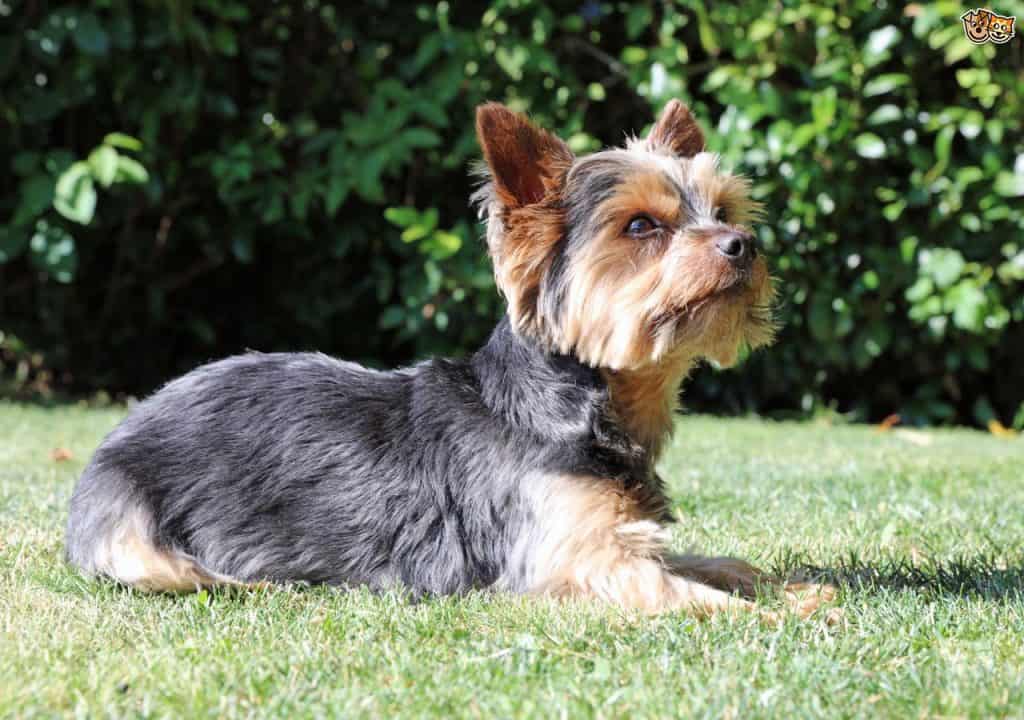




![10+ Best Dog Food Toppers That Your Dog Will Love [Including Picky Eaters] best dog food toppers with a small puppy](https://dogisworld.com/wp-content/uploads/2023/12/Topper-Product-Cover-100x70.jpg)


